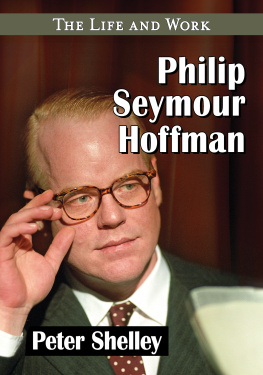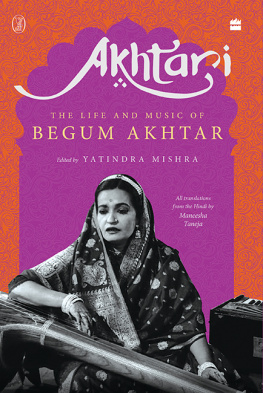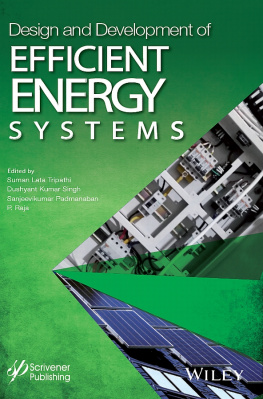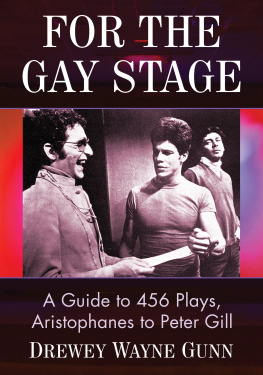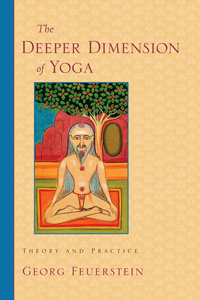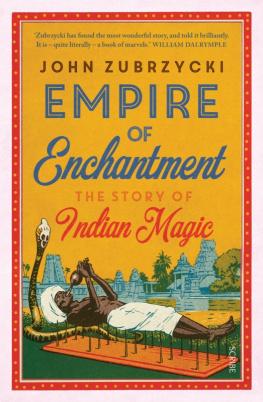Table of Contents
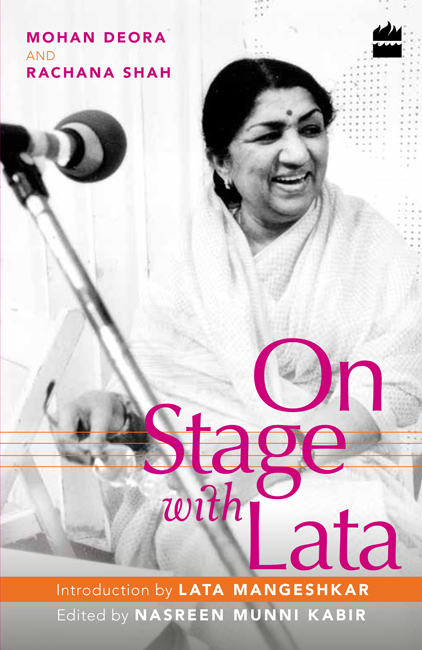
On Stage with Lata
MOHAN DEORA
RACHANA SHAH
Introduction by
Lata Mangeshkar
Edited by
Nasreen Munni Kabir

HarperCollins Publishers India
For my parents
Kashiprashad and Champadevi
Mohan Deora
Contents


Different aspects of Lata Mangeshkars life, her professional career and her social and charitable activities have been the subject of many books and articles. But a feature of her working life that has remained largely undocumented are her international tours and pioneering role in raising the standard of Hindi film music concerts in the West.
I am proud and privileged to say that together with my team, we organized and promoted Lata Mangeshkars shows in the United States of America, Canada, the Caribbean and the Fiji Islands from 1975 to 1998. The shows were all record-breaking events and had her fans coming in their thousands to see her at every venue and in every city.
Lata Mangeshkar was undoubtedly instrumental in upping the bar of the Hindi film music show outside India. Formerly, singers would perform in low-key song-and-dance events that were held in small community halls, schools and colleges. But Lataji insisted that she and her co-artists would sing in mainstream venues. She was the first Indian singer to take the stage at the Royal Albert Hall in London (1974), and during our US/Canada tours, she sang at the top venues where world-class musicians have performed. These prestigious venues included New Yorks Carnegie Hall, Madison Square Garden (MSG), Shrine Auditorium Los Angeles [LA], Fox Theater (Detroit) and Maple Leaf Gardens (Toronto).
In late 1974, when I first proposed the idea of touring the USA and Canada to her, she refused. It was only thanks to Mukeshjis gentle persuasion that Lataji finally agreed. From the first tour in 1975, we went onto make musical history for our communities settled in the West.
For many years, I have believed that the experience and memories of those concerts should be preserved in book form. That said, I was a little nervous when discussing the idea with Lataji, as I did not know how she would react. But when I explained the kind of book I had in mind, she immediately encouraged me by saying that she thought it was an excellent idea. Thats all I needed to hear.
It took me about two years to gather the material and images needed for the book. My core team and I spent several hours recollecting memories of those times, reliving those wonderfully special days when we put the shows together. As soon as I had gathered all the material and notes that I had made along the way, I sat down to writing. It was not long before I realized that I needed the help of Rachana Shah, Latajis niece. Although this book is written entirely in the first person narrative, I would not have been able to complete it without her help. I have known Rachana since she was nine years old, and when I told her that I wanted us to share the author credit, she was reluctant, and said, No, Uncle. It is not necessary. But I was adamant.
On Stage with Lata is the result of our collaboration. Through anecdotes and memories, this is an account of Lata Mangeshkar on tour, starting with our first show at the beautiful Shrine Auditorium in Los Angeles on 9 May 1975 when Lataji and Mukeshji topped the bill.
Beyond the confines of a recording booth, or as a voice coming from the lips of generations of screen stars, we discovered a whole other side of Lataji as she performed before her army of adoring fans. Her perfect dedication towards her work, her exchanges with co-singers, musicians and friends provide new insight into a personality whose brilliant songs are etched forever in our hearts. The overwhelming response to Lataji in the Fiji Islands or in the Caribbean came as a surprise even to her but as always she reacted to the wildly enthusiastic reception she received with great humility.
Over a twenty-three-year period of touring, each set of concerts brought new adventures it was a very different kind of musical journey for us all. Many things happened along the way, but the most devastating was losing Mukeshji in Detroit in 1976. We could not get over his sad demise.
To organize fifty concerts across the USA and Canada was no simple task. It required detailed planning and commitment. I had my responsibilities to my own professional career as a nuclear power generation specialist, so I needed support from my friends. They had their own day jobs too, but together we somehow accomplished our mission. My core team stood by me through the years and without their help, these concerts would not have happened. It is impossible to list the great number of well-wishers who came forward to solve our problems, but they know that I shall always be in their debt.
In undertaking this book, I have used the generous contributions of many people who were closely associated with me, starting with my 1975 tour partner Ramesh Shishu. I would like to mention the Detroit journalist Usha Mangrulkar who was once a newscaster for the radio programme The Sound of India, and whose long article on the 1975 tour was of immense help to me.
I am very grateful to Nasreen Munni Kabir who has so meticulously edited the text, translated the Hindi passages and helped Rachana and me give the book its final shape. I extend my thanks to my brother Ashok and his wife Alka, Vishakha, Ron Eisenberg, my three grandchildren Ajay, Saaniya, Armaan, and Shantanu Ray Chaudhuri of HarperCollins who have encouraged me all the way.
If I were to thank Lata Mangeshkar for putting her trust in me over all these years, and for all the many things that she has done for me, I am sure this book would double in size. So I will end by saying that there is nothing truer than the simple statement made by my wife Suvarna, my children Aparna and Sunit, and all the people who came forward to help when they said, Anything for Lataji.
MOHAN DEORA

One day some concert organizers came to my father and asked if they could hold a jalsa where my father Deenanath Mangeshkar, a celebrated classical singer, would perform. I was standing nearby and overheard the conversation. I said, Baba, I want to sing too.
What will you sing? he asked.
You taught me Raga Khambavati, so Ill sing that, and a song from one of your plays.
He looked at me somewhat taken aback perhaps my confidence took him by surprise. I was only nine years old. My father thought it over for a few minutes and agreed that I could sing with him on the stage.
Later that day, I put on a white frock with tiny patterns on it, styled my hair in a wave across one side of my face, and started to head towards the main door of the house when my mother stopped me and asked where I was going. I didnt answer her and quickly slipped out. There was a photographers studio across the street from where we lived. I pushed my way in and asked the photographer to take a picture of me. A few days later, it appeared in the local newspaper alongside a photograph of my father, with the caption: Classical programme by father and daughter.
The evening of the concert finally arrived. I was the first to get onto the stage and sang Raga Khambavati. Then my father sang late into the evening. I was very sleepy and put my head on his lap and fell fast asleep. Everyone seemed happy enough about my first public appearance.




